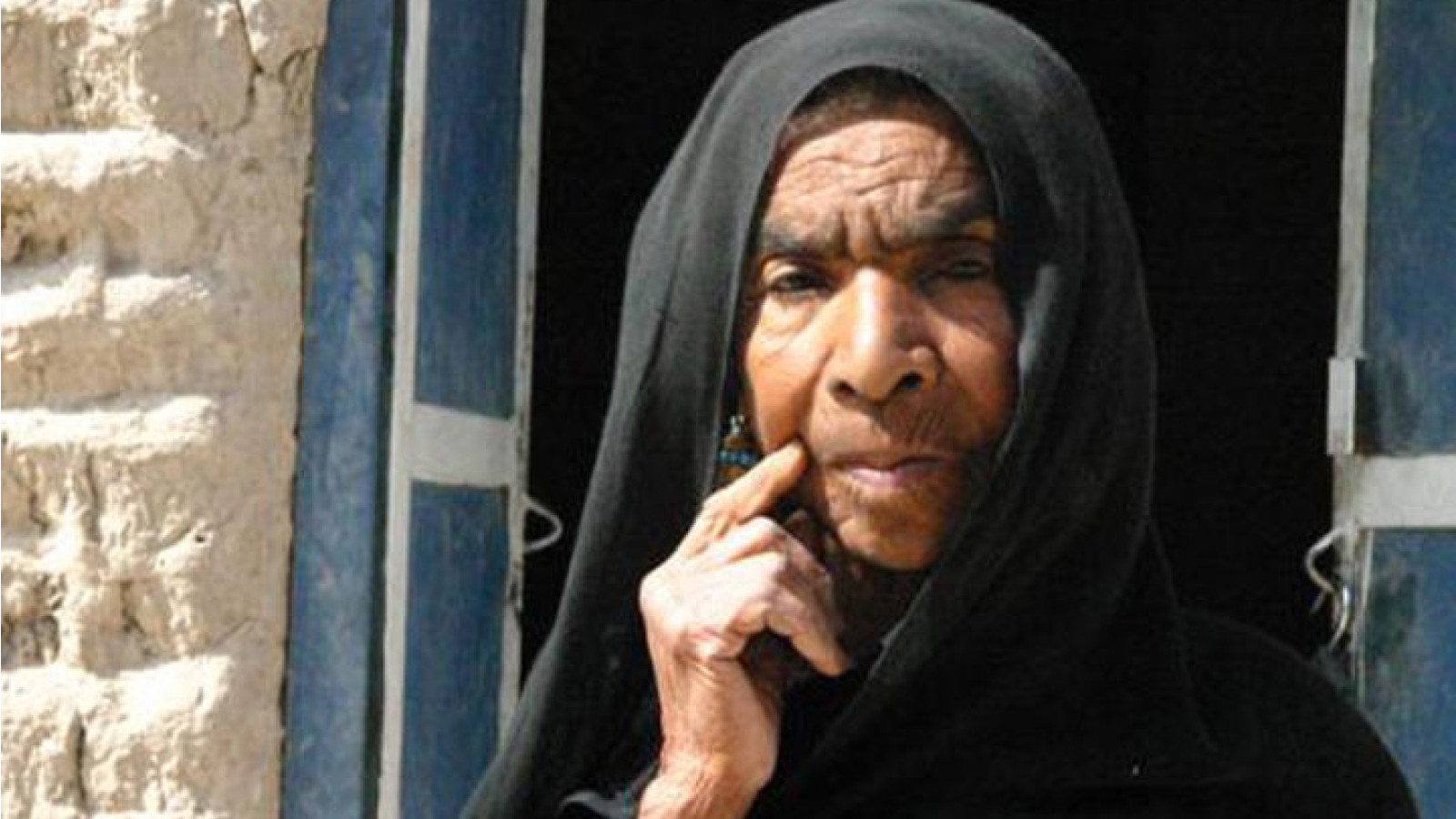
Mahtab Nowruzi is one of those women who immortalized her daily life and the local art of her habitat by her love and constant efforts. She is the most famous artist of embroidery of Sistan and Balushestan. She was born on Dey 20, 1312 SH in the village of Ghasemabad, of Bampur district in Iranshahr County.
Since Ghasemabad is very close to the Hirmand Rive it had many ever green palm trees in the past. But when drought affected this region, Ghasemabad lost its plants, too. Agriculture, which was the source of income for many families, was now facing serious danger. The art of Ghasemabad women helped this region to find another source of income and kept this ancient handicraft alive, too. Embroidery is common in a vast area of Baluchestan but Ghasemabad is one of the rare areas that is still resisting the cheap motifs sewed by machines and fake works imported from neighbor countries. This resistance against imported art is the heritage of Mahtab Nowruzi.
Her fame is not reasonless. She learned traditional embroidery form her mother when she was fifteen. She had become an embroidery master by the time she was sixteen. She never fell in love with any man, never married and did not have any children. She found love in her stitches and dedicated sixty three years of her life to making, teaching and protection of the art of embroidery. That is why all the women and young girls of village consider themselves children of Mahtab Nowruzi. She also traveled to other parts of the province to promote this handicraft. What distinguishes her from others are her fine and skillful works as well as the effort she put into this art. During the second half of Pahlavi dynasty, she became famous by needle working of certain dresses. Some of her artworks are now kept in Sa’dabad complex. She passed away on Tir 24, 1391 SH, when she was seventy-eight years old. Before her death, she donated her fields in Ghasemabad so that a library would be built in it. In 1393 SH, her niece, Zeinab Nowruzi, who learned embroidery from her, held and exhibition titled “The Handworks of Mahtab’s Daughters”.
The impression of Mahtab Nowruzi can be seen not only in embroidery, but also in the poems by her daughters. In a poem, Nasrin Behjati tells of Mahtab: “I found out too late that Mahtab, the Baluch woman of my land, needle worked the entire world. Even though she had not seen the forest, she created the train track from Javeh to Zahedan so green that all Baluchestan smelled like Paddy field.”